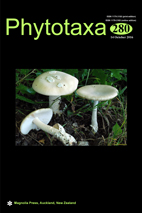Abstract
Several collections of Amanita species from section Vaginatae have been reported to be strictly associated with Helianthemum plants growing in grasslands, a still largely under-explored ectomycorrhizal habitat. The main aim of this study was to investigate the taxonomic status and phylogenetic position of strictly Helianthemum-associated Amanita sect. Vaginatae taxa, informally named Amanita “helianthemicola”. Collections from Italy, England and France were included in this study. The morphologically closely related species complex A. lividopallescens was also examined. Analyses were carried out based on both morphological and molecular data (phylogenetic analysis of the nrITS sequences). All investigated Amanita collections, which are strictly associated with Helianthemum nummularium, turned out to be conspecific with A. simulans. Amanita simulans was recently described from Sardinia (Italy) from Populus nigra habitats based on morphological characters only. As the holotype of A. simulans was lost, a neotype is designated here based on a voucher from the original collecting area. Amanita simulans is re-described, and an extensive discussion on the morphological variability, host species range, distribution and related taxa is provided. Amanita lividopallescens was confirmed as a good species, and re-delimited based on our phylogenetic analysis; moreover, it was epitypified with a recent and well-documented collection from Corse (France). Amanita stenospora is a synonym of A. lividopallescens, being a colour form of the latter without taxonomic value.

